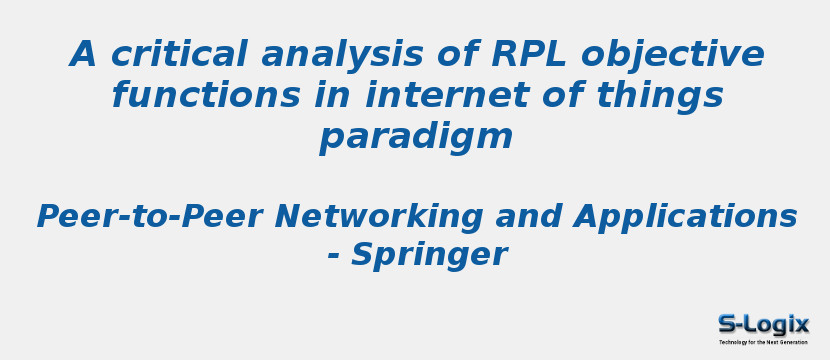Research Area: Internet of Things
IoT supports a spectrum of applications, each of which has certain specific requirements. For instance, mission critical applications cannot tolerate delay in data transmission however simple monitoring applications are delay tolerant. The lifetime and performance of IoT sensor networks depend on the metric/constraint (ETX, Energy etc.) selected for routing path, data size and quality of service required. The selection of metric /constraint dependent Objective function (OF) in RPL provides a range of solutions for IoT applications. However, state-of-art solutions mainly focus on single metric/constraint resulting in poor performance of protocol. To understand the protocol behavior for different metrics (single and combined) a complete evaluation of RPL over important performance parameters is needed. Researchers have proposed several routing algorithms which are application specific and do not define a generic parent selection process. We require a structured algorithm for Minimum Rank Hysteresis Objective Function (MRHOF) applicable to majority of IoT applications. In this paper we have proposed a generalized algorithm for MRHOF along with routing path cost evaluation which defines the complete parent selection process. Further, comparative analysis of different RPL OFs has been done to identify suitable OF for enhanced RPL performance. Performance evaluation parameters have been extended to PDR, power consumption, hop count, average ETX, Rt metric and inter packet time, for different network size and link quality. Results are obtained using Cooja simulator of Contiki. RPL with combined metric provide 24% higher PDR, 28% lower power consumption and 39% lower inter-packet time as compared to RPL with single metric.
Keywords:
Author(s) Name: Neeti Gupta, Anuradha Pughat & Vidushi Sharma
Journal name: Peer-to-Peer Networking and Applications volume
Conferrence name:
Publisher name: Springer
DOI: https://doi.org/10.1007/s12083-021-01180-9
Volume Information: volume 14, pages 2187–2208
